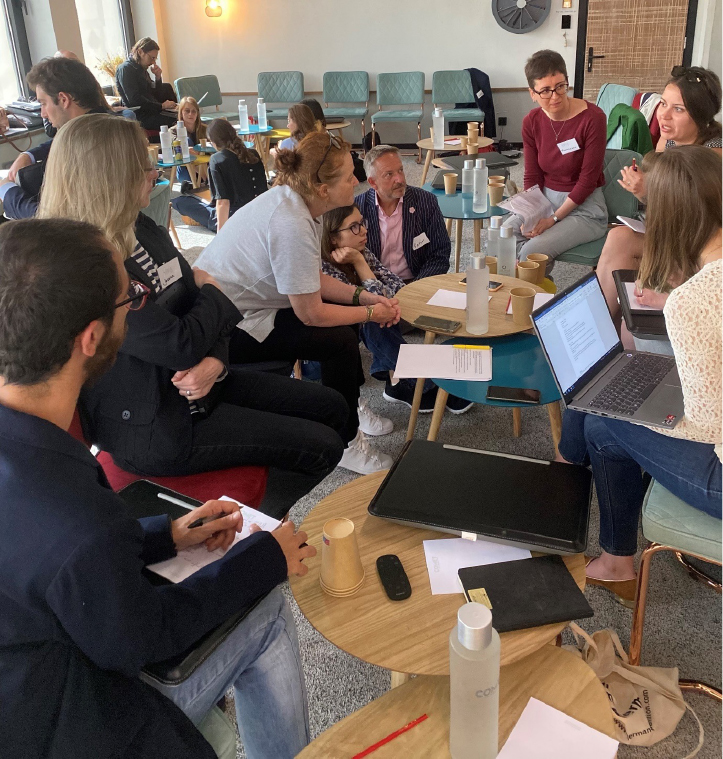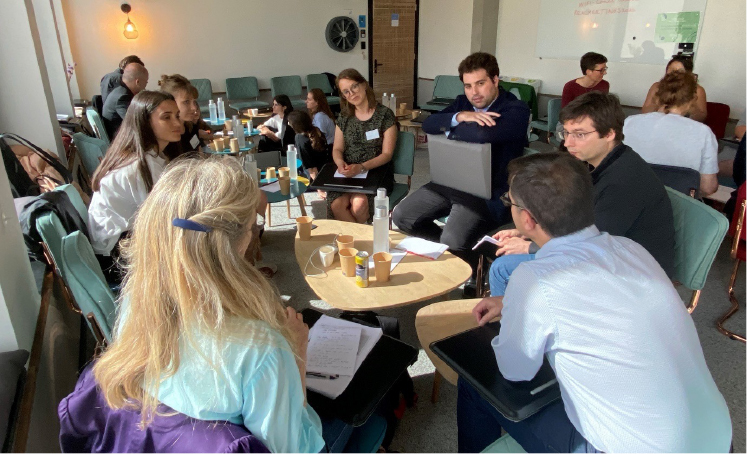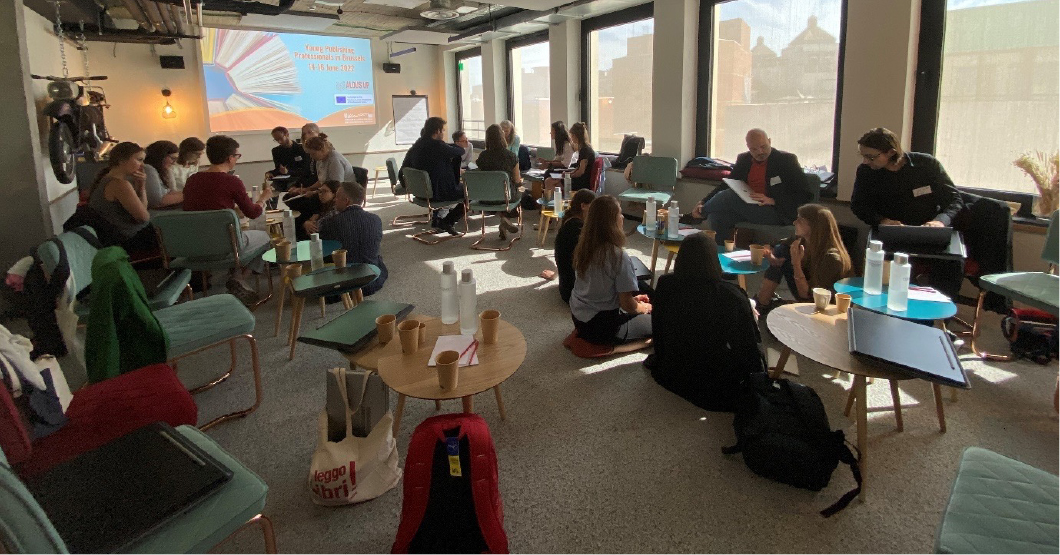This piece is part of a series dedicated to the latest Young Publishing Professionals in Brussels event (YPPiB), taking place on 14th to 16th June 2022. Participants in the YPPiB initiative have the opportunity to visit Brussels and learn more about the European Book sector through activities such as: meetings with representatives of European institutions, dedicated workshopping and networking sessions, meetings with members of the European Parliament, and overall, the chance to confront and network with practitioners from all over Europe.
During the first day of the Young Publishing Professionals in Brussels 2022 programme (first part of our report: here; second part: here) the participants debated on the sustainability of the sector, including the most promising advancements in the field to complement their already substantial efforts, with the goal of making book publishing as green as possible.
The session was introduced by Quentin Deschandelliers, in charge of the Sustainability Working Group at the Federation of European Publishers (FEP). Afterwards, the publishers split into groups to debate the topic, facilitated by members of the FEP team.
Overall, they agreed on the need for greater political and economic support from institutions, including at European level, to better mainstream best practices and standards and more effectively work towards the goal of sustainability. In this regard publishers pointed out that sharing green publishing guidelines (such as BOEV’s: Climate protection (boersenverein.de)) would be very helpful for the sector.
Most participants’ publishing houses are using certified paper from responsibly managed forests. Sustainable printingand printing management are instead more challenging. Technological innovation and the use of local printing facilities might mitigate overproduction and overprinting, as well as have an impact the issue of returns. These can also be reduced by adapting print runs to pre-order data. However smaller publishers might not have access to adequate technologies, and risk facing stock shortages. Similarly, the use of plastic wrappings reduces returns preventing damage to the volumes, but clearly has a tangible ecological impact.
Publishers also discussed ways to reduce the use of paper, such as moving books’ notes and bibliographies online (accessible via QR codes), or optimising translations choices towards smaller wordcounts. Format optimisation is also an option: imperceptible format changes (e.g., pages 1 mm smaller) reduce paper consumption substantially.
Other practices considered included a reduction in the use of consumables (e.g., stationery), and the optimisation of distribution and subcontracting management (for traceability). Some publishing houses apply internal policies to reduce their carbon footprint, either by involving specialised NGOs or by incorporating best practices in their overall office routines.
Publishers mentioned cradle-to-cradle production methods, which aim at eliminating waste production (rather than reducing it) mimicking natural cycles. Currently, such an approach would be too expensive to adopt, especially for smaller companies, with the overall advantages still unclear. However, its potential captured the attention of many publishers.
Finally, publisher turned to communication, both in terms of disseminating the sector’s efforts, and in terms of publishing choices: publishers strive to make audiences aware of what is done and can be done for sustainability. Publishing relevant titles is part of this effort, as readers’ informed choices would reward more sustainable practices, not only in the book sector.

YPP sustainability sessions -1

YPP sustainability sessions -2


















